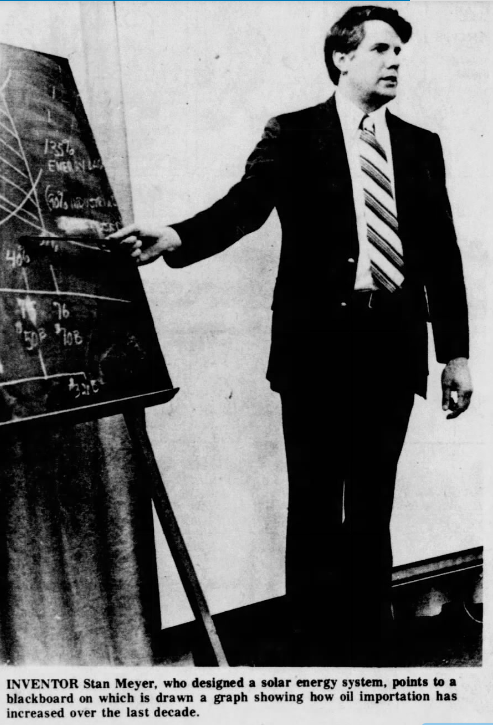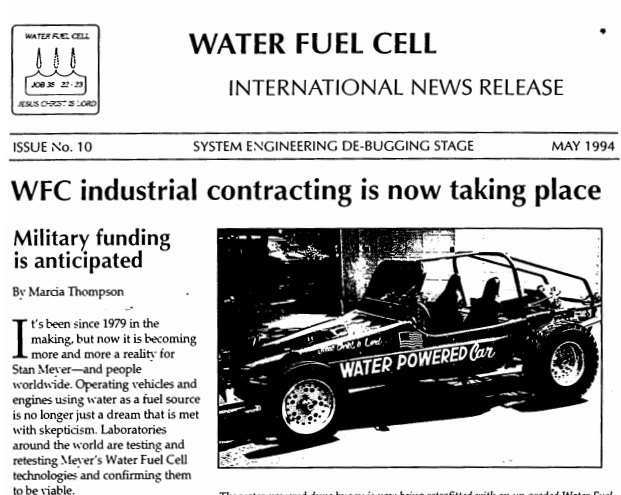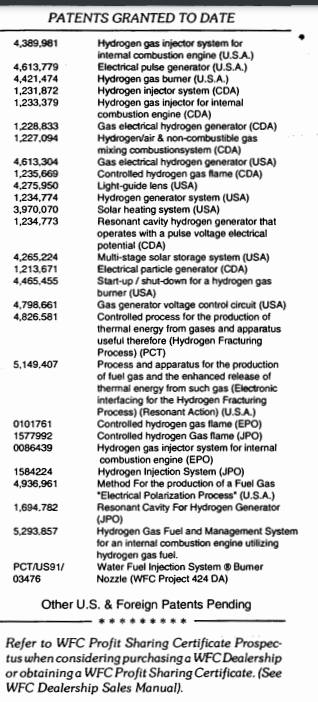Challenges Faced by Stan Meyer
 Stanley Meyer’s journey to develop and promote his water fuel cell technology was fraught with numerous challenges. Despite his ambitious vision for a future powered by clean energy, Meyer faced obstacles on multiple fronts—technical, financial, legal, and societal. These challenges ultimately hindered his ability to fully realize and implement his revolutionary ideas.
Stanley Meyer’s journey to develop and promote his water fuel cell technology was fraught with numerous challenges. Despite his ambitious vision for a future powered by clean energy, Meyer faced obstacles on multiple fronts—technical, financial, legal, and societal. These challenges ultimately hindered his ability to fully realize and implement his revolutionary ideas.
One of the primary challenges Meyer faced was the skepticism from the scientific community. His claims of being able to split water molecules using a significantly lower amount of energy compared to conventional electrolysis methods were met with disbelief by many experts. Traditional science, based on well-established principles of chemistry and physics, viewed his theories as contradicting known energy laws, particularly the first and second laws of thermodynamics. The lack of peer-reviewed publications and independent verification of his results further fueled skepticism, leading many scientists to dismiss his work as pseudoscience.
 In addition to skepticism, Meyer faced significant financial challenges. Developing new technology, especially one that aimed to revolutionize the energy sector, required substantial funding. Meyer struggled to secure consistent financial backing, as many potential investors were wary of the unproven nature of his claims. Although he did receive some support from individual investors and small companies, the lack of major financial backing made it difficult for Meyer to take his prototypes beyond the experimental phase and move towards mass production.
In addition to skepticism, Meyer faced significant financial challenges. Developing new technology, especially one that aimed to revolutionize the energy sector, required substantial funding. Meyer struggled to secure consistent financial backing, as many potential investors were wary of the unproven nature of his claims. Although he did receive some support from individual investors and small companies, the lack of major financial backing made it difficult for Meyer to take his prototypes beyond the experimental phase and move towards mass production.
Legal issues also posed a significant hurdle for Meyer. He faced lawsuits from investors who accused him of fraud after failing to deliver on his ambitious promises. In one notable case, Meyer was sued by two investors who claimed that the technology did not perform as advertised.
The court ruled against Meyer, concluding that he had committed fraud. This legal defeat not only drained Meyer financially but also tarnished his reputation, making it even harder for him to find new supporters for his work.
Despite these legal setbacks, Meyer continued to publicly defend his technology. He released a public notice stating that his work was intended for the betterment of society and that any attempts to discredit him were part of an effort to suppress his revolutionary ideas. He remained vocal about his belief that his technology was being intentionally undermined by powerful interests who stood to lose from a shift away from fossil fuels. Meyer's public defense resonated with those who were hopeful for a cleaner energy future, further cementing his role as a visionary in the eyes of his supporters.
 Beyond the financial and legal struggles, Meyer also dealt with the societal and industrial resistance that often accompanies groundbreaking innovations. His technology, if successful, had the potential to disrupt the established energy industry, threatening the interests of powerful oil and gas companies. Meyer believed that his work was being actively suppressed by those who saw it as a threat to their profits. Whether or not these claims were true, it is undeniable that introducing a technology that could render fossil fuels obsolete would face fierce resistance from those invested in maintaining the status quo.
Beyond the financial and legal struggles, Meyer also dealt with the societal and industrial resistance that often accompanies groundbreaking innovations. His technology, if successful, had the potential to disrupt the established energy industry, threatening the interests of powerful oil and gas companies. Meyer believed that his work was being actively suppressed by those who saw it as a threat to their profits. Whether or not these claims were true, it is undeniable that introducing a technology that could render fossil fuels obsolete would face fierce resistance from those invested in maintaining the status quo.
Meyer’s work was also hindered by technical challenges. While he claimed to have successfully built and demonstrated working prototypes, replicating his results proved difficult for others. The complexity of his circuits, the precise tuning required for resonance, and the unconventional approach he took made it challenging for others to verify or replicate his work. This lack of reproducibility further fueled skepticism and made it difficult for Meyer to build a strong foundation of credibility within the scientific and engineering communities.
Despite these numerous challenges, Stanley Meyer remained committed to his vision. He continued to work on his technology and promote it to anyone who would listen, believing that he was on the cusp of an energy revolution. While his untimely death in 1998 left many questions unanswered, Meyer’s determination and innovative spirit continue to inspire those who seek to develop alternative energy solutions. The challenges he faced serve as a reminder of the difficulties inherent in pushing the boundaries of established science and technology, but also of the potential rewards that await those bold enough to try.
